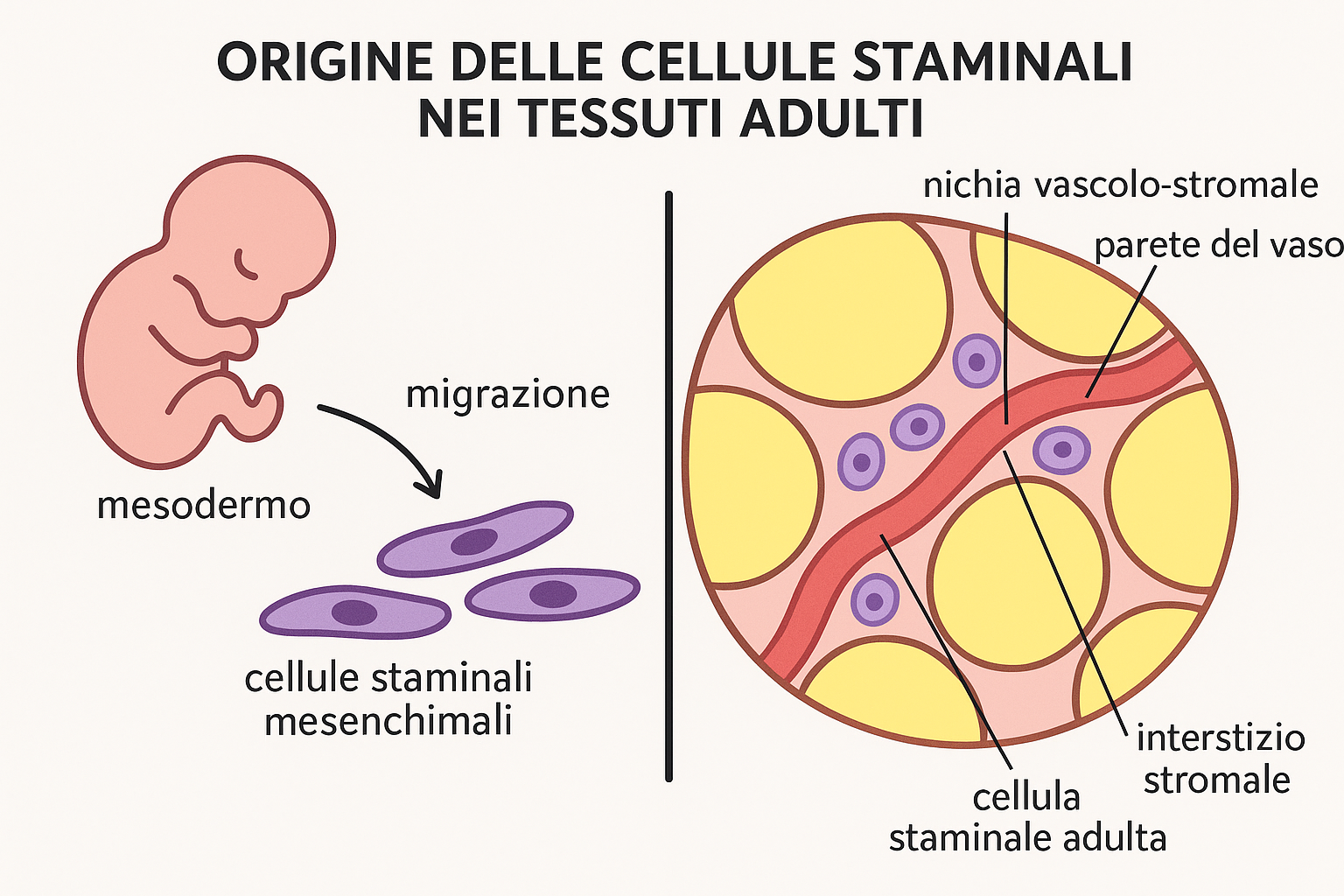Stem cells have the unique ability to differentiate and specialize into virtually all types of human cells—around 200 in total—including nerves, skin, muscle, liver, heart, and bone.
They are generally classified by origin:
- Embryonic stem cells – pluripotent, able to become any type of cell or tissue
- Fetal stem cells
- Adult stem cells (ASCs)
Among these, adult stem cells represent a particularly valuable resource thanks to their accessibility and clinical potential.
Adult stem cells are pluripotent and can regenerate or replace damaged tissues, making them highly relevant in anti-aging therapies. Of particular interest are mesenchymal stem cells (MSCs), which:
- Are abundant in adipose tissue
- Are multipotent (capable of differentiating into bone, cartilage, muscle, adipose tissue, and fibroblasts)
- Possess self-renewal capacity
- Play a central role in tissue repair and regeneration
MSCs can be isolated from the stromal vascular fraction (SVF) of adipose tissue via enzymatic digestion or filtration. This tissue is an extraordinarily rich reservoir of regenerative cells.
Their reparative effects are achieved in two ways:
- Differentiation into the specific cell types needed for repair
- Paracrine action, releasing growth factors and cytokines that recruit other reparative cells and stimulate new blood vessel formation
Clinical applications of autologous MSCs from fat tissue include:
- Facial and skin rejuvenation
- Enhancement of tissue function and vitality
- Treatment of scars and chronic wounds
- Management of fibrotic and fibro-proliferative diseases
- Muscle injuries
- Joint degeneration
- Atrophies and dystrophies
- Potential applications in liver, cardiac, and neurological pathologies in the near future
For MSCs to integrate effectively, two key conditions must be met:
- Local availability of the cells in the damaged area
- Appropriate stimuli for targeted differentiationStem cells therefore represent not only a cornerstone of regenerative medicine, but also a pivotal resource in the evolving field of Morphodynamic Cosmetic Surgery.


